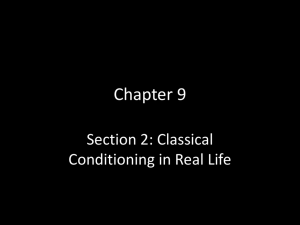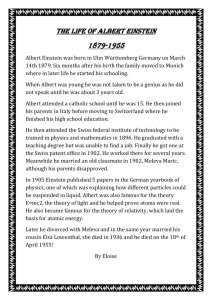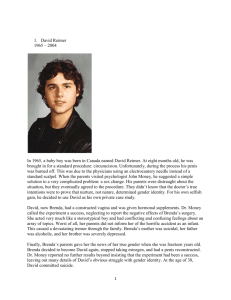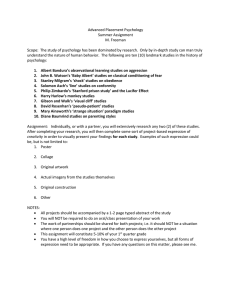Aim:
advertisement
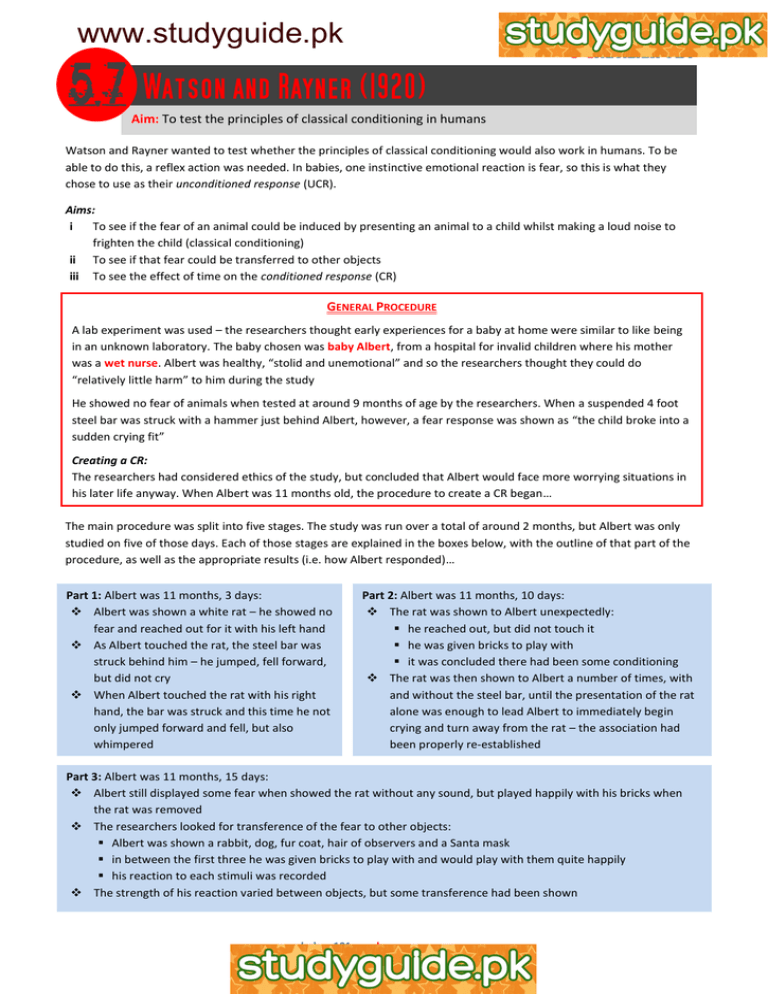
www.studyguide.pk Aim: To test the principles of classical conditioning in humans Watson and Rayner wanted to test whether the principles of classical conditioning would also work in humans. To be able to do this, a reflex action was needed. In babies, one instinctive emotional reaction is fear, so this is what they chose to use as their unconditioned response (UCR). Aims: i To see if the fear of an animal could be induced by presenting an animal to a child whilst making a loud noise to frighten the child (classical conditioning) ii To see if that fear could be transferred to other objects iii To see the effect of time on the conditioned response (CR) GENERAL PROCEDURE A lab experiment was used – the researchers thought early experiences for a baby at home were similar to like being in an unknown laboratory. The baby chosen was baby Albert, from a hospital for invalid children where his mother was a wet nurse. Albert was healthy, “stolid and unemotional” and so the researchers thought they could do “relatively little harm” to him during the study He showed no fear of animals when tested at around 9 months of age by the researchers. When a suspended 4 foot steel bar was struck with a hammer just behind Albert, however, a fear response was shown as “the child broke into a sudden crying fit” Creating a CR: The researchers had considered ethics of the study, but concluded that Albert would face more worrying situations in his later life anyway. When Albert was 11 months old, the procedure to create a CR began… The main procedure was split into five stages. The study was run over a total of around 2 months, but Albert was only studied on five of those days. Each of those stages are explained in the boxes below, with the outline of that part of the procedure, as well as the appropriate results (i.e. how Albert responded)… Part 1: Albert was 11 months, 3 days: Albert was shown a white rat – he showed no fear and reached out for it with his left hand As Albert touched the rat, the steel bar was struck behind him – he jumped, fell forward, but did not cry When Albert touched the rat with his right hand, the bar was struck and this time he not only jumped forward and fell, but also whimpered Part 2: Albert was 11 months, 10 days: The rat was shown to Albert unexpectedly: he reached out, but did not touch it he was given bricks to play with it was concluded there had been some conditioning The rat was then shown to Albert a number of times, with and without the steel bar, until the presentation of the rat alone was enough to lead Albert to immediately begin crying and turn away from the rat – the association had been properly re-established Part 3: Albert was 11 months, 15 days: Albert still displayed some fear when showed the rat without any sound, but played happily with his bricks when the rat was removed The researchers looked for transference of the fear to other objects: Albert was shown a rabbit, dog, fur coat, hair of observers and a Santa mask in between the first three he was given bricks to play with and would play with them quite happily his reaction to each stimuli was recorded The strength of his reaction varied between objects, but some transference had been shown www.aspsychology101.wordpress.com www.studyguide.pk Part 4: Albert was 11 months, 20 days: When Albert was shown the rat once more, without any sound, his response was weaker than previously, so the researchers renewed the association between the rat and the steel bar They then showed him the rabbit and the dog both with and without the sound to strengthen the fear of these too The researchers moved the experiment to a lecture theatre, to study the transference of fear to a different setting (four observers were present): they concluded that transference could occur to both different stimuli and different situations Part 5: Albert was 12 months, 21 days: The researchers tested Albert again to see if he retained the conditioned response Although a little weaker, a negative response was shown by Albert when presented with the succession of stimuli without any sound (the rat, rabbit, dog, hair, coat and Santa mask) He would still continue to play happily with his bricks Albert then left the nursery that day, so the researchers were unable to remove the conditioned response – and believed that it would last for a lifetime (note: Albert was always due to leave that day, his departure was not connected to the running of the experiment) Classical conditioning would explain the effects shown in Albert as shown to the right. The term transference was used to describe the process of transferring the fear from one object to other objects. Therefore, transference means generalising the conditioned response across multiple stimuli. This process is also called generalisation. UCS: steel bar sound UCR: fear and crying UCS: steel bar sound + CS/NS: presentation of rat UCR: fear and crying CS: presentation of rat CR: fear and crying CONCLUSIONS It is possible to create a conditioned emotional response in humans after only a few pairings of the stimuli It might be necessary to repeat the pairings though to maintain the strength of the conditioned response – i.e. there may be some extinction of the response A conditioned response may be transferred to other, similar objects and other settings – i.e. there can be generalisation EVALUATION There were careful controls, and the independent variable was clear and operationalised with the dependent variable being carefully monitored and measured (if the study were more ethical, it could be again repeated to test for reliability) The study demonstrated Pavlov’s evidence for classical conditioning in dogs and how it could be generalised to humans (although the drawback to this is that the study used only one case study of one particular child) Lack of ecological validity because there was an artificial setting for Albert and the lab setting may have heightened Albert’s level of fear The ‘tasks’ could be argued to lack validity – playing with animals and loud noises are both true to life, but the frequent coincidence of the two is not common The biggest concern is the ethics of the study (it could not be repeated today) – there was distress to Albert, and there was no informed consent nor right to withdraw from the study www.aspsychology101.wordpress.com
